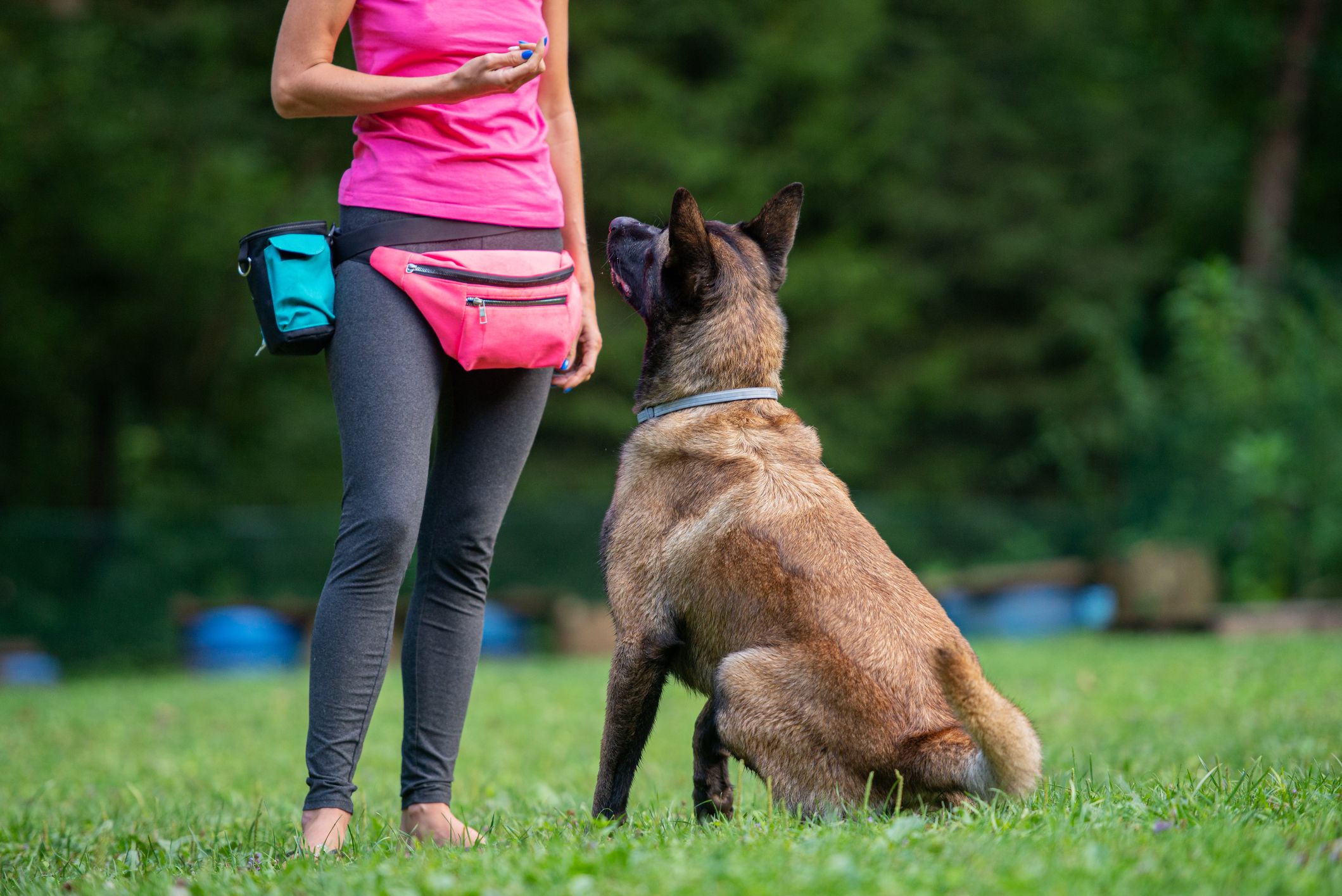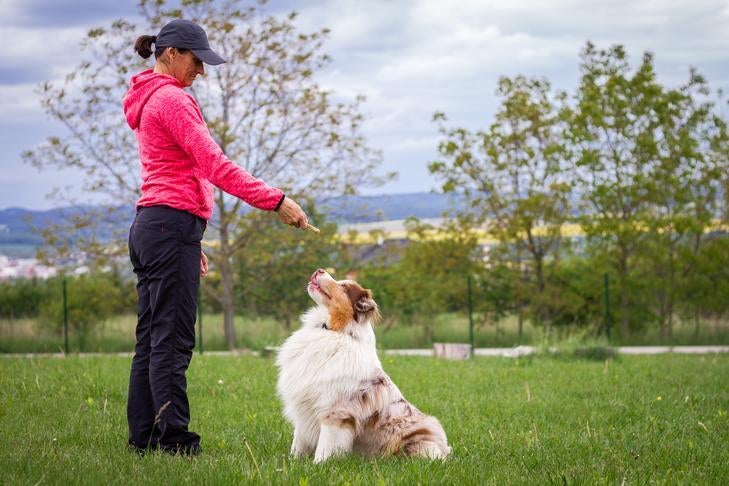The Ultimate Overview to Canine Training: Change Your Family pet's Actions
Efficient canine training is important for fostering an unified relationship between pets and their proprietors. The ins and outs of canine habits and the application of structured training techniques play a crucial duty in this procedure. By comprehending the principles of favorable reinforcement, consistency, and socializing, pet proprietors can navigate common difficulties that occur throughout training. This guide not just aims to equip you with the needed tools to change your canine's actions however also invites you to discover how these fundamental ideas can lead to a deeper link with your animal. What may be the very first action in this transformative journey?
Understanding Canine Actions
Understanding canine habits is crucial for efficient training and an unified partnership in between dogs and their owners. A canine's behavior is influenced by a combination of genetics, environment, and experiences. Dog training. Recognizing these elements enables owners to tailor their training approaches to satisfy the private requirements of their pets
Pet dogs interact mostly with body movement, vocalizations, and faces. For example, a wagging tail can suggest enjoyment or happiness, while a tucked tail may signify anxiety or entry. Observing these hints allows owners to respond properly, reinforcing favorable actions and resolving unfavorable ones properly.
In addition, comprehending the social structure of pet dogs can provide understandings into their behavior. Canines are pack pets, and they flourish in an organized atmosphere. Developing constant rules and clear limits can prevent confusion and advertise a complacency.
Furthermore, identifying the natural impulses of pets, such as the urge to dig or chase, is critical. These instincts can be rerouted through proper outlets, such as play or exercise. By adequately understanding these behavioral aspects, proprietors can foster a positive training experience, ultimately causing a obedient and well-adjusted canine buddy.
Crucial Training Techniques
Efficient pet training relies on a range of necessary strategies that can considerably improve the learning process for both the proprietor and the pet dog. One essential method declares support, which includes satisfying desirable behaviors with treats, praise, or playtime. This method motivates pet dogs to repeat the habits that cause favorable results, cultivating a relying on partnership in between the pet dog and proprietor.
One more key method is consistency in assumptions and commands. Using the same spoken signs and hand signals aids the pet recognize what is required, decreasing confusion and advertising quicker understanding. Additionally, establishing clear boundaries and rules is essential for effective communication.
Socializing is additionally an essential part of training. Revealing pet dogs to different environments, people, and various other animals helps them create ideal social abilities and minimizes stress and anxiety in unfamiliar scenarios.
Finally, patience and timing are vital. Educating sessions must be frequent yet quick, making sure that the dog continues to be engaged and responsive. By utilizing these vital techniques, proprietors can create a favorable and structured training experience that advertises etiquette and enhances the bond with their canine companions.
Producing a Training Set Up
How can a well-structured training timetable enhance a pet's knowing experience? A training schedule supplies uniformity, guaranteeing that pets receive routine, focused guideline. This predictability assists canines understand what is expected of them, reinforcing their discovering and enabling far better retention of commands and behaviors.
When creating a training routine, it is necessary to think about the pet dog's age, type, and individual character. Youthful puppies may gain from shorter, much more regular sessions, while adult pets might thrive go to this web-site with longer, less regular training durations. Incorporating a variety of tasks can additionally keep the sessions engaging, stopping dullness and advertising enthusiasm for knowing.
Furthermore, organizing training sessions at details times of the day can aid solidify a routine. Coupling training with day-to-day strolls or playtime can produce a favorable association with discovering. It is likewise vital to consist of time for reinforcement, such as treats or appreciation, to compensate wanted actions without delay.
Lastly, flexibility is key. While consistency is vital, being versatile to the pet's mood or power degree can improve their discovering experience. A well-crafted training routine eventually lays the foundation for efficient communication and a more powerful bond in between the pet dog and owner.
Usual Training Difficulties
Regardless of having a well-structured training timetable, pet dog proprietors commonly come across different challenges throughout the training procedure. One usual problem is variance in cues and commands. When numerous relative use various terms or tones, a pet dog may come moved here to be baffled, preventing its capability to learn properly.
One more frequent obstacle is diversion. Dog training. Pet dogs are normally interested creatures, and external stimulations such as various other pets, noises, or individuals can divert their attention throughout training sessions. This requires proprietors to produce a regulated atmosphere or gradually present distractions to reinforce emphasis
Additionally, differing energy degrees can impact training results. High-energy canines might struggle to settle and concentrate, while a lot more laid-back types might need added motivation to involve. Tailoring the training strategy to fit the individual pet dog's temperament is necessary for success.

Building a Strong Bond
A strong bond between a pet dog and its proprietor is vital for effective training and total well-being. Dog training. This relationship fosters trust, which is critical for effective communication during the training process. When a canine feels linked and safe and secure to its proprietor, it is most likely to react positively to cues and commands
To develop this bond, uniformity is key. Developing a regimen that consists of normal feeding, workout, and training sessions helps create a feeling of security. Furthermore, positive support methods, such as deals with, praise, and play, enhance preferred habits while strengthening the emotional link.
Socializing is one more important aspect of bond-building. Exposing your dog to different settings, individuals, and other pets aids them really feel a lot more comfortable and confident, enhancing the bond with their proprietor. Taking part in tasks together, such as strolling, playing bring, or joining obedience training, promotes synergy and common pleasure.
Conclusion

Comprehending pet behavior is crucial for effective training and a harmonious partnership between canines and their proprietors.Effective pet dog training counts on a variety of crucial techniques that can considerably improve the learning process for both the owner and the pet dog.Regardless of having a well-structured training schedule, canine proprietors often experience different difficulties throughout the training procedure.In conclusion, effective canine training depends on a detailed understanding of canine actions, the application of essential methods, and the facility of an organized training routine. By stressing favorable support and uniformity, pet proprietors can significantly enhance their pets' behavior, ultimately ensuring a harmonious connection and promoting the well-being of both the pet and its setting.